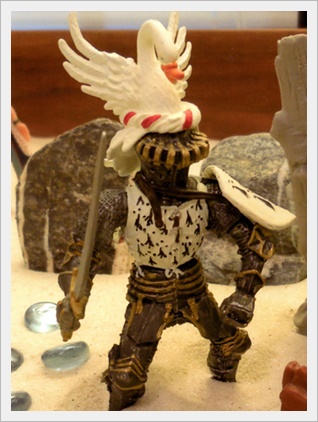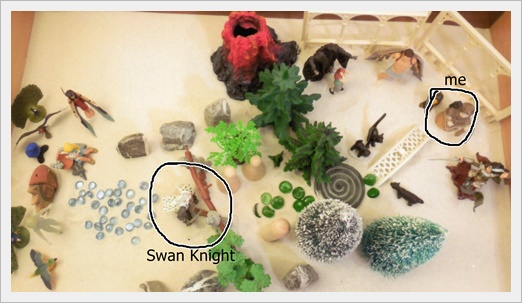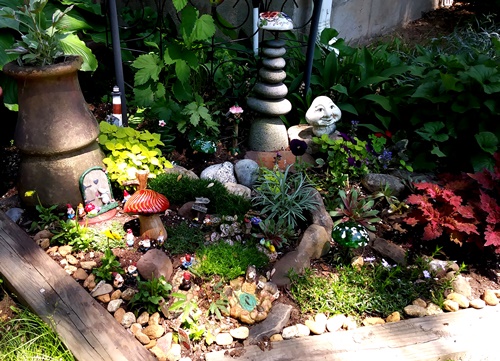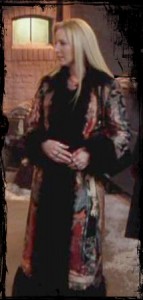I am going to Maine with two friends next week. While there, I am going to put to rest what remains of the guilt and sorrow and regret regarding my relationship with my mother.
The other day I went and spent some time with a good friend, and who is also a healer of souls carrying burdens of regret and guilt. Ed Tick began as my therapist and over these 30 years, that relationship blossomed into a friendship. I still reach out to him when I am troubled, and I visited him earlier this week in his new home not far from where I now live.
The result is that, next week, in Maine, as part of solidifying this new phase of my life on which I have embarked, I will do a ritual to let go of stuff that needs to be freed. I will build a fire, read this last missive to my mom, and then burn the paper. And then burn the triptych with her images — sending her history as a woman to soar with the gulls.
In preparation, I have set up a little altar to honor the good parts of my relationship with my mother, who died five years ago. I have her wedding ring that I put on a chain, and beads from the old red coral necklace (that has been a part of my matriarchal lineage for several generations) that I made into another necklace. I will wear these during the ritual, but, for now, they are a part of the altar. One of the few things I have left of hers is her old statue of Saint Anthony, the heretic converter. I’m sure that she prayed to him all of the time to convert this heretic. It didn’t work, but this icon,one of her favorites, has become mine. Maybe I like him because he holds a lily. And a child. And an open book. In my poetic heresy, I can interpret that any way I like.

So, here is what I will read. And what I will burn. In place of prayer, I write. Here and wherever. Because I can.
If we become the mother
we wanted, our children
grow the roots and wings
of our lost early yearnings,
Our daughters become
the women we wish we were,
our sons the men we dreamed.
But too often we succumb
to the echo of her voice,
caught in the tangle
of a cord never cut.
There is no burying our mothers,
though we lay them deep.
They live in us one way or other,
whether we heed or not.
I am sorry, Mom, that I was not the daughter you wanted. I’m sorry that you were not the mother I wanted. I know that you tried your best to be the best kind of mother that you knew how to be – the kind your mother was. And I did my best to break away from that kind of suffocating tradition.
Yet, despite how I disappointed you over and over, you were always there for me when I needed you. Because that is what the mothers in our family do, And that is how the best parts of you still live on in me – in the kind of mother I have finally become.
I’m sorry that your last years were filled with such turmoil. I wish I had made better choices about how to give you the care you needed. I guess it was my turn to try my best. That was all either of us could ever do.
I’m sorry that your last days were not what you had always hoped they would be – to die at home, in your own bed, with family around you. I did the best I could, Mom. I tried to make sure that you didn’t suffer. Instead, I suffered for you, and that was OK because it meant that in those last days I kept you safe from enduring some unnecessary familial narcissistic tyranny.
There were good times and bad times during the last of the years that we lived together. I like remembering the time we had then to talk and laugh, to dance the polka, to sing all of the old songs, to share our memories of times that were good for us both. I liked that I was finally able to do things for you that you really appreciated, that made you feel good. Because I know there were many other times before that when I made you feel bad.
All of those years as I struggled to grow up, I never really saw you the way that others did. You would have been glad to hear what cousin Cristine wrote to me about you after you died. She said:
I remember the enigmatic smile she always wore, like the one in The Portrait. I never remember her upset or angry. She was always dressed impeccably and I remember her love for Ferragamo shoes. Odd what we remember from our past — the strange minute things that become permanent strong memories and the important things that fade away. I always remember the bathroom at your house on Nepperhan — the l-o-n-g narrow pink bathroom with a door at each end (how cool!) and how it always smelled of green Palmolive soap. I remember your mom cooking and running back and forth to the kitchen and not sitting down and enjoying her own meal.
Someday, I will write a poem about that “enigmatic smile,” which I now think was a biting back of your disappointment and frustration for the parts of your life that you were never allowed to make your own — but I was too wrapped up in my own selfish agendas to realize that.
I don’t know if you were aware of much during your last days, but there was a sea gull who spent most of each day screeching from and pacing on the roof outside the window of your hospital room. This is what I found out about sea gulls:
Sea Gulls are messengers from the gods, especially ancient Celtic deities. They bridge the gap between the living world and the spirit world. Opening yourself to their energy enables you to communicate with the other side. Sea Gull can also give you the ability to soar above your problems and see things from above. Seeing all the different viewpoints.
So tonight I am here at the ocean, communing with the messenger seagulls, sending this message into the wind, into the endless sky: I miss you, mom, I’m glad we had some good last days together, and I wish we had been able to be closer, sooner. I release what is not worth carrying, and I cherish what is left: the comfort that, at the end, we knew how much we loved each other.








 I love it when stuff like that happens.
I love it when stuff like that happens.